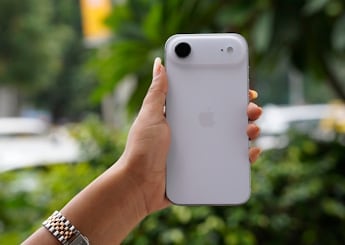- Home
- Science
- Science News
- NASA Says Taking Sample From Asteroid Bennu Harder Than Expected
NASA Says Taking Sample From Asteroid Bennu Harder Than Expected

Photo Credit: Nature Journal
After two years crossing the solar system, the NASA space probe Osiris-Rex arrived last December near the asteroid Bennu to complete its mission of collecting a sample -- but touching the rock will prove much harder than scientists had expected.
The Osiris-Rex team said Tuesday that the surface of the asteroid, which measures 490 meters (1,600 feet) in diameter, was covered in stones and boulders. They had expected it to be smoother and easier for the probe to touch.
"We go back to the drawing board and start thinking again," Dante Lauretta, the head of the mission, told a press conference. The team's observations also appeared in the Nature journal on Tuesday.
The probe was designed to head for a flat area with a radius of 25 meters, but the images beamed back since December showed that there is no area that big which is free of boulders.
As a result, the team will have to aim more tightly.
"Now we're going to try to hit the center of the bullseye," said project manager Richard Burns.
Since December, the probe has been using its instruments to map Bennu from a close distance, currently three miles.
The asteroid, which orbits the sun, is 85 million kilometres (52 million miles) from the Earth.
The goal is touch the surface with a robotic arm for just five seconds in July 2020, retrieving a sample of between 60 grams and two kilograms (two ounces to 4.4 pounds) of regolith, which means relatively small particles such as gravel or sand, since the machine can only suck up particles measuring less than two centimetres.
The samples will be stowed in the probe, which will return to Earth in 2023.
Bennu is technically known as "rubble-pile asteroid", that is, it is made up of pieces of debris that had broken off larger celestial bodies and come together under the effect of gravity.
It has more than 200 boulders larger than 10 meters in diameter, and some stretching up to 30 meters, according to researchers writing in Nature Astronomy. It has a number of craters between 10 and over 150 meters in length.
"It is not trivial to deliver a spacecraft with meter scale resolution to the surface of an asteroid in the microgravity environment," said Lauretta, who nevertheless said he was "confident" that the team would rise to the challenge.
Another surprise Bennu had been withholding was that it emits particles which fall back to the surface like rain. That should not however endanger the probe, the team said.
Get your daily dose of tech news, reviews, and insights, in under 80 characters on Gadgets 360 Turbo. Connect with fellow tech lovers on our Forum. Follow us on X, Facebook, WhatsApp, Threads and Google News for instant updates. Catch all the action on our YouTube channel.
Related Stories
- Samsung Galaxy Unpacked 2025
- ChatGPT
- Redmi Note 14 Pro+
- iPhone 16
- Apple Vision Pro
- Oneplus 12
- OnePlus Nord CE 3 Lite 5G
- iPhone 13
- Xiaomi 14 Pro
- Oppo Find N3
- Tecno Spark Go (2023)
- Realme V30
- Best Phones Under 25000
- Samsung Galaxy S24 Series
- Cryptocurrency
- iQoo 12
- Samsung Galaxy S24 Ultra
- Giottus
- Samsung Galaxy Z Flip 5
- Apple 'Scary Fast'
- Housefull 5
- GoPro Hero 12 Black Review
- Invincible Season 2
- JioGlass
- HD Ready TV
- Laptop Under 50000
- Smartwatch Under 10000
- Latest Mobile Phones
- Compare Phones
- Realme P4x 5G
- OnePlus Ace 6T
- Nubia Flip 3
- Nubia Fold
- OPPO A6x 5G
- Samsung Galaxy Z TriFold
- Poco F8 Ultra
- Poco F8 Pro
- Asus ProArt P16
- MacBook Pro 14-inch (M5, 2025)
- Poco Pad M1
- Poco Pad X1
- Just Corseca Skywatch Pro
- Honor Watch X5
- Acerpure Nitro Z Series 100-inch QLED TV
- Samsung 43 Inch LED Ultra HD (4K) Smart TV (UA43UE81AFULXL)
- Asus ROG Ally
- Nintendo Switch Lite
- Haier 1.6 Ton 5 Star Inverter Split AC (HSU19G-MZAID5BN-INV)
- Haier 1.6 Ton 5 Star Inverter Split AC (HSU19G-MZAIM5BN-INV)

















